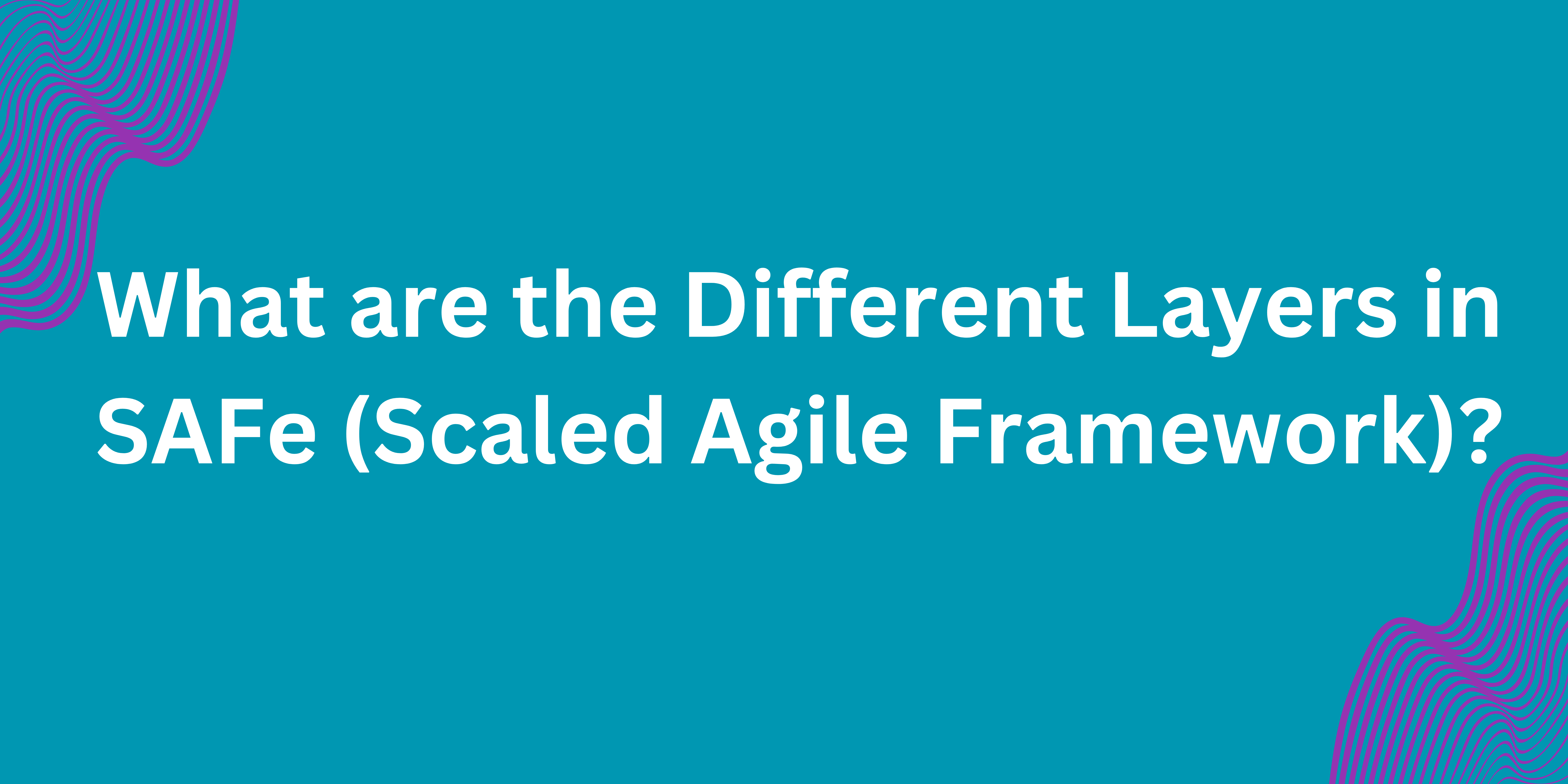11 NOV 2024
By AxiGlobe

The Scaled Agile Framework (SAFe) is a popular framework that helps large organizations implement agile practices across their entire enterprise. SAFe provides structured layers that create alignment and collaboration across teams working toward a common goal. These layers break down complex projects and allow large-scale teams to work in harmony while delivering value consistently.
In SAFe, there are four main layers, each catering to different levels of organizational hierarchy and responsibility. These layers are Team, Program, Large Solution, and Portfolio. Let’s take a closer look at each of them:
The Team Layer is the foundation of SAFe, where agile teams work to deliver value in small, manageable chunks. Teams in this layer are typically cross-functional and self-organizing, embracing Agile methodologies such as Scrum or Kanban. Here are some key features of the Team Layer:
The Team Layer empowers small teams to act autonomously within the boundaries of SAFe, allowing them to experiment and innovate quickly while still aligned with larger organizational goals.
The Program Layer focuses on managing and coordinating the work of multiple teams aligned within an Agile Release Train (ART). ARTs are long-lived teams composed of multiple agile teams that work together to deliver features for a larger solution. The Program Layer is a crucial level, as it brings various teams together to deliver integrated and valuable increments. Key components include:
The Program Layer helps synchronize teams, ensures alignment with broader business goals, and addresses dependencies between teams, promoting consistent value delivery across the organization.
The Large Solution Layer is designed to address more complex solutions that require collaboration across multiple ARTs or suppliers. This layer is often relevant in highly regulated industries or large enterprises dealing with complex systems (e.g., aerospace, automotive). Key aspects of the Large Solution Layer include:
The Large Solution Layer enables the efficient execution of large, complex programs by fostering collaboration across multiple agile teams and ARTs, ensuring that even the most challenging projects stay aligned with the organization’s objectives.
The Portfolio Layer represents the highest level in SAFe, focused on aligning the organization’s strategic goals with the work carried out by various ARTs and Solution Trains. This layer connects the organization’s business strategy with the development process, allowing executives and stakeholders to make informed decisions that support long-term objectives. Key components include:
The Portfolio Layer establishes the framework for aligning agile practices with the enterprise’s strategic goals, helping organizations prioritize projects that drive value while maintaining flexibility in a constantly changing environment.
SAFe’s four-layer structure (Team, Program, Large Solution, and Portfolio) is designed to promote alignment, transparency, and value delivery at every level of an organization. This framework allows large enterprises to scale agile practices successfully while remaining aligned with strategic goals and adapting to market demands.
Each layer contributes to the organization's overall agility by providing a structure that accommodates growth and complexity, supporting both team-level and enterprise-level goals. For companies looking to embrace agile at scale, SAFe’s layered approach offers a robust roadmap for achieving consistent, sustainable, and customer-focused value delivery.
Oh! We recently winded up one batch, but no worries. We have a few more in the coming weeks.
Just opt-in for the updates about dates, prices, and curriculum with your preferences!
We keep you posted about the course.
©️2020 - 2025 AxiGlobe All Rights Reserved. The certification names are the trademarks of the respective authorised bodies
 USA
USA
Disclaimer :
Profession Scrum Master (PSM-I®, PSM-II®, PSM-III®), Profession Scrum Product Owner (PSPO-I®, PSPO-II®, PSPO-III®), Profession Scrum Developer (PSD-I®), Scaled Professional Scrum(SPS®),Professional Scrum With Kanban(PSK-I®) , Prove your knowledge of Professional Agile Leadership(PAL-I®), Prove your knowledge of Evidence-Based Management™ (PAL-EBM®), Prove Your Scrum with User Experience Knowledge
(PSU-I®) and Professional Scrum Trainer(PST®) are registered trademarks of Scrum.org®. AxiGlobe INC is a Professional Training Network member of Scrum.org®.
Certified Business Analysis Professional (CBAP®), Certification of Capability in Business Analysis(CCBA®), Entry Certificate in Business Analysis(ECBA®), Agile Analysis Certification(AAC®), Certification in Business Data Analytics(CBDA®), Certificate in Cybersecurity Analysis(CCA®), Certificate in Product Ownership Analysis(CPOA®) are registered trademarks of International Institute of Business Analysis(IIBA®). AxiGlobe INC is an Premier Level Endorsed Education Provider of IIBA®.
SAFe Agilist Certification (SA®), SAFe Program Consultant Certification (SPC®),SAFe Program Consultant Trainer Certification (SPCT®),SAFe Practitioner Certification(SP®),SAFe Release Train Engineer Certification (RTE®),SAFe Scrum Master Certification (SSM®),SAFe Advanced Scrum Master Certification (SASM®),SAFe DevOps Practitioner Certification(SDP®),Agile Product Manager Certification (APM®),Lean Portfolio Manager Certification (LPM®),Product Owner / Product Manager Certification (POPM®),SAFe Architect Certification (ARCH®),Agile Software Engineer Certification (ASE®) and SAFe Government Practitioner Certification (SGP®), Scaled Agile Framework® and SAFe® are registered trademarks of Scaled Agile, Inc.®. AxiGlobe INC is a Silver Partner of Scaled Agile, Inc®.
DevOps Foundation®, DevOps Leader®, SRE Foundation℠, SRE Practitioner℠, DevSecOps Foundation℠, Continuous Testing Foundation℠, Certified Agile Service Manager®, Continuous Delivery Ecosystem Foundation℠ and Value Stream Management Foundation® are registered trademarks of DevOps Institute. AxiGlobe INC is a Registered Education Partner (REP) of the DevOps Institute (DOI) ®. Read more...
